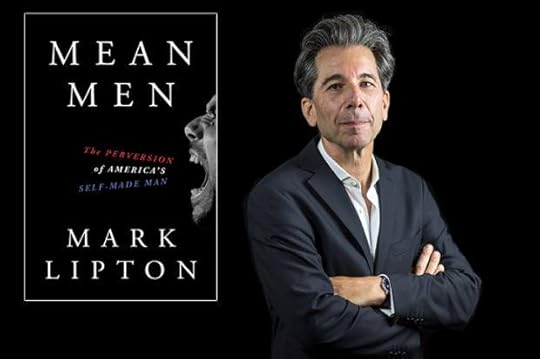Helen H. Moore's Blog, page 321
August 25, 2017
Listen: Charlottesville should not have been a surprise

Hundreds of white nationalists, neo-Nazis and members of the "alt-right" march toward Emancipation Park in Charlottesville, Virginia. (Credit: Getty/Chip Somodevilla)
This week’s special episode of The Chauncey DeVega Show examines the recent white supremacist terrorism in Charlottesville.
To try to make sense of the violence and tumult which occurred there, I reached out to five different people.
The first guest is Adele Stan. She is a journalist for The American Prospect. Stan was present in Charlottesville during the “Unite the Right” hate festival and shares her first person account of what transpired there.
The second guest is “James” from the leading anti-fascist, anarchist, and human rights information clearing house and website “It’s Going Down”. James has been tracking the white supremacist and other fascist organizations who ran amok in Charlottesville. He explains their connections, funding, whether the “Unite the Right” hate festival was a success and the role of physical active resistance in standing against fascists and their allies.
The third guest is Amanda Marcotte, a politics and culture writer here at Salon. Marcotte shares her thoughts about resistance and non-violence in the aftermath of Charlottesville, as well as Trump’s statements about white supremacist violence.
The fourth guest is Tim Wise. He is one of the United States’ leading anti-racism activists and scholars. Wise reflects on the role of white privilege in the white supremacist political violence and mayhem in Charlottesville, toxic white masculinity and the white supremacist movement, how last weekend’s events were very predictable, and white folks’ denial about the dangers posed by the so-called “alt-right”.
He explains how, “I was convinced that something would go horribly wrong because I knew that there were at least a number of folks within that contingent who were going there with the express purpose of terrorizing the community, of terrorizing folks of color, terrorizing liberal white folks, terrorizing anyone who stood in their way. ”
Wise also offers a challenge to white Americans. “Start addressing white racism and white supremacy with your friendship circles, whether that’s online or in person. That’s one tactic and there are lots of different ones. But, you have to stand up and say, I’m going to choose a different way to live in this skin and by God, you don’t speak for me.”
The fifth guest is Dr. David Reiss, a psychiatrist who has written extensively about Donald Trump. Dr. Reiss also has a chapter in the forthcoming book The Dangerous Case of Donald Trump: 27 Psychiatrists and Mental Health Experts Assess a President, which attempts to evaluate Trump’s mental health. Dr. Reiss offers his suggestions about maintaining one’s sense of self and wellness in the aftermath of the terrorism in Charlottesville. He also provides some insights into the mental health of the white supremacists and other fascists who attended the “Unite the Right” hate festival.
You’ll also hear my demand that white Americans clean up their own house and finally confront the deep sickness of racism and white supremacy that ran amok in Charlottesville. I also explain how the white racial terrorism that took place there is indicative of the broader problem that is Trump’s political cult.
Author booted from the New York Times Bestseller List lashes out

"Handbook for Mortals: Book One of the Series" by Lani Sarem (Credit: GeekNation Press)
Debut author — and occasional actress — Lani Sarem who has been accused of faking the sales of her paranormal novel “Handbook for Mortals” to appear on the the New York Times is firing back against the publication and the Young Adult community for, in her view, unjustifiably removing her from a spot on the list.
On Thursday, the authenticity of Sarem’s accomplishments were questioned as she landed the No. 1 spot on the bestsellers list — a feat that seems impossible from an author unknown in the YA community. As people speculated how a new writer from a relatively new publishing company could land a spot on the coveted book list, YA author Phil Stamper took to Twitter to conduct an investigation of his own.
I find it… strange that a mediocre website can decide it wants to be a publisher, and one month later hit #1 on the NYT Bestsellers list. pic.twitter.com/RS1UoWl6H4
— Phil Stamper (@stampepk) August 24, 2017
A book that no one has heard of except for the two niche blogs that covered the GN press release. Sells ~5,000 in the first week? Ok.
— Phil Stamper (@stampepk) August 24, 2017
After a series of tweets revealed contradictory variables in the novel’s distribution — in addition to scathing direct messages that suggest Sarem or her team purposely ordered large quantities of the novel from Times reporting retailers and the likelihood the alleged scheme was to prepare for a film adaptation with Sarem as the star — the Times pulled the book from its list due to “inconsistencies in the most recent reporting cycle,” according to Vulture.
Sarem responded to the criticism she received, and the removal of her novel from the bestsellers list, in a conversation with Huffington Post. “OK, I get it,” she said, “I didn’t play by the normal YA rules. I didn’t […] send out galleys two years in advance, and I didn’t go talk to the people that thought I should come talk to them. I did it a different way. Do you only get to be successful in the YA world if you only do it the way that they think it’s supposed to be done?”
Sarem even took aim at the Times, claiming it bowed to overblown social-media outrage. “My personal opinion: I’m a first time author; I did some great numbers,” Sarem told The Hollywood Reporter. “They put me on the list. The list is curated. They didn’t have to put me on the list despite how many books I sold. When these people made a big issue, they were like, ‘This is too much effort.'”
At this point, no accusation from any of the parties involved here has been verified independently, but — gosh — is this ever entertaining.
Border Patrol will keep checkpoints north of the border open during Hurricane Harvey

(Credit: AP Photo/The Monitor, Gabe Hernandez)
U.S. Border Patrol announced Thursday that, despite the approach of Hurricane Harvey, roadside immigration checkpoints north of the border would remain open as thousands evacuate from coastal areas, according to the Texas Tribune.
“Border Patrol checkpoints will not be closed unless there is a danger to the safety of the traveling public and our agents. Border Patrol resources, including personnel and transportation, will be deployed on an as needed basis to augment the efforts and capabilities of local-response authorities,” the agency said in a statement.
The American Civil Liberties Union (ACLU) quickly opposed the Border Patrol’s decision, arguing that it puts undocumented and mixed-status immigrants at serious risk. “As people seek refuge from hurricane Harvey, they are likely to have to go north or west of Texas and would have to go through a checkpoint,” Lorella Praeli, director of immigration policy and campaigns for the ACLU, explained. “By keeping checkpoints open, the Border Patrol is putting undocumented people and mixed-status families at risk out of fear of deportations.”
The ACLU also stated that this Border Patrol tactic “breaks with past practices,” though this is not the first time the Border Patrol has done something like this. In 2008, when the state of Texas was hit hard by Hurricane Dolly, the Border Patrol’s checkpoints trapped families in some of Texas’s poorest communities.
As the Texas Observer wrote in a 2009 article:
As undocumented immigrants, Susanna and Raul felt they had no choice. In May, a U.S. Border Patrol spokesperson had told local media outlets that immigration checkpoints about 80 miles north of the border would continue operating during a storm. The agency later said it would “not impede evacuations,” but during Dolly, when evacuation was voluntary, agents stopped every vehicle headed out of South Texas. Susanna and Raul knew that if the family evacuated, they would be asked about their citizenship before continuing to Austin or San Antonio. (The family asked that their last name not be used because of deportation concerns.)
The Border Patrol’s policy may be contingent on the severity of a storm. Just last year, when a mass evacuation was ordered for Hurricane Matthew, immigration security measures were suspended, the Texas Tribune reported. Border Patrol checkpoints were also suspended in 2012 during Hurricane Isaac.
The ACLU and ACLU Texas did not respond when asked to comment on the history of the Border Patrol practices.
Texas Gov. Greg Abbott has urged citizens to evacuate from coastal areas while they still can. Abbott said that the impending storm “has turned into a very complex and dangerous hurricane,” according to the Washington Post.
“Even if an evacuation order hasn’t been issued by your local official,” Abbott exhorted, “if you’re in an area between Corpus Christi and Houston you need to strongly consider evacuating.”
“Let’s set the expectations: Texas is about to have a very significant disaster. And we have to let people know that,” William Long, President Trump’s appointee to head the Federal Emergency Management Agency, said.
Major health insurer exposes HIV status of more than 12,000 customers

(Credit: AP/Jessica Hill)
Insurance company Aeta Inc. inadvertently revealed the HIV status of approximately 12,000 of its customers when a notice for disease-related medication was made visible through the clear window on envelopes mailed throughout the country. Although it was not possible to see majority of the letter, the first few sentences gave away the contents of the envelope. The beginning of the letter, which could be seen without opening the envelope, said “when filling prescriptions for HIV Medic … ”
In a separate mailer, Aetna apologized for the error and attributed it to an independent mailer they did not identify. The insurer acknowledged this week that the mailer was sent to about 12,000 of their customers. However, they cannot determine the exact number of people affected because it would depend on the position of the letter within the envelope.
“We sincerely apologize to those affected by a mailing issue that inadvertently exposed the personal health information of some Aetna members,” the company said in a statement. “This type of mistake is unacceptable, and we are undertaking a full review of our processes to ensure something like this never happens again.”
“Regardless of how this error occurred, it affects our members and it is our responsibility to do out best to make things right,” they continued.
Legal Action Center and the AIDS Law Project of Pennsylvania responded Aetna’s oversight in a cease-and-desist letter. “Aetna’s privacy violation devastated people whose neighbors and family learned their intimate health information,” said Sally Friedman, legal director of the Legal Action Center. “They also were shocked that their health insurer would utterly disregard their privacy rights.”
Friedman also urged the insurer should take “corrective measures to ensure that this gross breach of privacy and confidentiality never reoccurs.”
Ronda Goldfein, the executive director of the Pennsylvania AIDS group, added the error could cost people their safety. “It creates a tangible risk of violence, discrimination and other trauma,” she said in a statement.
August 23, 2017
Trump’s new Afghanistan strategy is not new, and it’s not a strategy

(Credit: AP/Carolyn Kaster)
The best way to get an idea of what we’re dealing with in Afghanistan is from the air. I was lucky enough — or unlucky, depending on how you see it — to fly from Bagram airfield to Kandahar and back when I was there over a decade ago. At least some of each trip flew over the area of Afghanistan just to the west of its border with Pakistan. Let me tell you what I saw from the air: mile after mile after mile of utterly and completely inhospitable territory. You can see something of what I saw if you go on Google Earth and click on the satellite view. The border runs north-south in a wandering manner along the tops of the ridges of mountains between the two countries. On either side of the border, fingers of valleys run west, or east, as the case may be, in the classical pattern of land formed by eons of erosion. Streams run down the valleys into rivers and along these streams, you can sometimes see small clusters of stone or mud buildings where the people of each country have formed communities to farm what little arable land can be irrigated from the streams coming down out of the mountains.
But most of the land on either side of the border is uninhabited: too mountainous, too distant from trading towns in either country to be of any use to live and farm on. Occasionally, and I mean very very occasionally, you can make out a dirt path or narrow road winding its way up one of the valleys, around mountain peaks, into new valleys, until finally the road switch-backs up the side of a mountain to a pass crossing the ridge along the border. But those dirt paths and roads are few and far between, and actual trading routes — roads that can be navigated by trucks and vehicles bigger than a jeep — cross the border only a few times in its 2,600 mile length.
I rented a four wheel drive Suzuki and hired a driver and a translator and drove from Kabul to Jalalabad, and from there north along the Kunar River to Asadabad and into the valleys running up from the river. Here is who I met and talked to: the Afghan people living there. That’s the thing about the border region of either country. Afghan and Pakistani people live in all of those hundreds of stream valleys running down from the mountains along thousands of miles of border. They’ve been living there for hundreds, sometimes thousands of years. And they’ll keep living there no matter what we do.
So when President Trump stood in a big auditorium at Fort Myer facing an audience of camouflage-clad military men and women on Monday night, that’s what he was talking about, whether he knew it or not, when he promised to put pressure on Pakistan to shut down Taliban and “terrorist” sanctuaries along the border with Afghanistan. “The killers need to know they have nowhere to hide, that no place is beyond the reach of American might and American arms.”
I’ll give you minute while you switch over to Google Earth and have a look at the satellite view of the border between Afghanistan and Pakistan. Anywhere along it at all. Okay, had a look? What do you think? See any hiding places? Like, maybe a few thousand wrinkles in the earth marking small valleys on either side of the border? The satellite view doesn’t provide a close enough look, but having driven along the border north of Jalalabad, I can tell you from eyeballing it, there are dozens of cattle and goat paths up there, and god only knows how many places to hide. One of the Afghan villagers I spoke to pointed across the Kunar River at the valleys (plural) we could see leading up toward the border and told me they were used every day in the smuggling of cattle between the two countries. It was a problem, he said, because recently some smuggled cattle from Pakistan had come across carrying mad cow disease which had infected some of the local cows and a whole bunch of farmers had to put their entire herds down. No place to hide? When you’ve got whole herds of cattle crossing the border regularly unimpeded, uninspected, unnoticed by either Afghan or American officialdom, I’d say that President Trump has given those soldiers in that auditorium a pretty tall mission.
It’s a mission that the 8,000 plus troops currently serving in Afghanistan and the 4,000 some rumored to be on their way, will never be able to carry out. So the speech that Trump gave on Monday night was like so much of his presidency, a toy speech about a war he knows absolutely nothing about. Hell, the generals who attended his big “summit” at Camp David a couple of weeks ago and “advised” him on his “new” “strategy” don’t know anything about it, either. You want to know how I know this? I’ll tell you.
Time-travel with me for a moment back to the war in Vietnam when one of the major problems we were said to have had over there was that the North Vietnamese and Viet Cong could use Cambodia and Laos as “sanctuaries” to hide from “American might and American arms.” So President Nixon ordered the infamous secret bombing of those two countries and carried out “incursions” into Laos, pursuing NVA and VC soldiers fleeing to their “sanctuaries.” Presumably, this is the secret portion of Trump’s “strategy” he wouldn’t tell us about on Monday night because, as he said, he doesn’t telegraph to his enemies what his plans are, like certain other presidents have done. Read here Obama, but Bush did the same thing.
How did that “strategy” in Vietnam work out for us? The last American combat troops left Vietnam on March 29, 1973, and we were out of there completely by April of 1975. South Vietnam fell to North Vietnamese troops shortly thereafter. So when Trump asserts, as he did on Monday night, “In the end, we will win,” he must be thinking of something along the lines of the same “winning” our sanctuary-attacking strategy achieved for us in Vietnam. That war, and the strategy which “won” it, was a counter-insurgency strategy, because that’s what we faced in Vietnam, an insurgency of Vietnamese citizens trying to drive us out of their country. It was such a huge success that the United State Army didn’t bother updating its take on counterinsurgency until they brought General Petraeus back from Iraq and installed him at the Command and Combined Arms Center at Fort Leavenworth where he and a small staff of officers wrote Field Manual 3-24 “Counterinsurgency.” And the strategy outlined in that 2006 field manual was such a success that we declared victory and pulled out of Iraq and let Isis take over practically the entire north of the country before re-committing troops in an attempt to take it back from them that is still ongoing. Our involvement in that godforsaken war in that godforsaken region of the world shows no sign of ending any time soon. Meanwhile, the counterinsurgency we’ve been running in Afghanistan has worked out just peachy for us, being that we’ve been there for 16 years, committing variously between a few thousand to more than 100,000 troops in our attempt to “win” the battle with the Taliban and whoever else we figure we’re fighting over there, without yet “winning” since Trump tells us as of Monday that “in the end” we’ll “win,” whenever “in the end” turns out to be.
There are about a hundred problems with Trump’s speech on Monday night, beginning with the fact that he read it in a monotone from a teleprompter showing words someone else had written for him, straight through the nonsense of the words themselves, to the manner by which the words were come by, to the so-called “war” the words were supposedly about, to the fact that something like the same speech was given at least a half-dozen times by Obama and Bush before him. We’re sending over extra troops! That’ll accomplish our mission! Whoa! Now we’re pulling out some troops! Because our mission is accomplished! Ooops! We’re sending in a few thousand extras because we forgot about that portion of the mission which actually wasn’t quite accomplished down there in Helmand Province or up there in Nangarhar Province . . . take your fucking pick.
But perhaps the biggest problem of all about Trump’s speech can’t be seen on Google Earth’s satellite view of the Afghanistan-Pakistan border. It can only be seen if you bother actually going there and look at the terrain with your own eyeballs and listen to the people with your own ears. The people in all of those steep, forbidding valleys? Those are the people we’re fighting over there. Maybe you watched the documentary “Restrepo,” about an American army unit assigned to a forward operating base in the Korengal valley outside of Asadabad, Afghanistan. Lots of shooting, punctuated by periods of boredom and goofing off and then more shooting. The people they were shooting at, described in the film as “Taliban” were the people living in that valley. They wanted the American soldiers out of their valley. Eventually, after many of them died and several Americans died, they got their way, just like the Vietnamese got their way almost five decades ago. They live up in those hundreds and hundreds of valleys, and there aren’t enough troops in the entire United States Military combined — Army, Marines, Navy, Air Force and Coast Guard — to patrol all those valleys and stop the citizens of either Afghanistan or Pakistan from doing what they want to do. If they want to smuggle cattle, they’ll smuggle cattle. If they want to grow poppies and smuggle opium, they’ll grow poppies and smuggle opium. If they want their women wearing burkas when they’re out in public, the women will wear burkas when they’re out in public. If they want to teach their children an extreme version of Islam, they’ll teach their children extreme Islam. If they want us to leave their valleys, then eventually we’ll leave their valleys, just like the soldiers on FOB Restrepo left the Korengal Valley, just like we left the valleys of Vietnam.
You see, that’s the problem with Trump’s speech on Monday. It’s not new — we’ve tried all this shit before and it didn’t work. It’s about Afghanistan, an impossible country of impossible terrain occupied by an impossible citizenry. And it’s not a strategy. It’s Vietnam all over again, and that didn’t work out so well for us at all, did it?
“Disjointed”: The marijuana sitcom made for killjoys who don’t smoke pot

Kathy Bates in Disjointed (Credit: Netflix/Patrick Wymore)
Sometimes smoking pot can make a person feel stuck — as in, the body can’t move, or be moved to move. Such a state goes well with the “Netflix and chill” ethos because if you’re locked inside it, odds are you have nothing better to do. Or even if you do, you’re not going to do it. Weed is hilarious like that.
Such a haze may also lead to heady musings, such as the notion that “bad” and “failure” can be mutually exclusive terms when it comes to television. Most of us know terrible television when we see it. But for reasons unknown, or the reason specified above, we keep on watching. Weed has a tendency to make failure bearable.
Then there are puzzles like Netflix’s “Disjointed,” premiering Friday. Created by David Javerbaum, formerly a writer for “The Daily Show with Jon Stewart,” and network comedy generator Chuck Lorre, “Disjointed” blunts its potential by tracing the linework of an established and well-traversed comedic niche with the same broad strokes Lorre employs in shows like “Two and a Half Men” and “Mike & Molly.”
Marijuana still isn’t legal for recreational use in most states, but pot is mainstream enough for the average viewer to know how mundane and widespread cannabis use is. Countless series have featured characters who smoke, and recent shows such as HBO’s “High Maintenance” depict users that hail from a variety of social strata leading normal productive lives.
There exists a poignant subplot in “Disjointed” involving the dispensary’s security guard Carter (Tone Bell), a veteran haunted by a frightening tour in the Middle East that left crippling scars in his psyche. Through Carter’s story, the show takes creative departures from the standard sitcom format using beautiful, haunting animated sequences, allowing viewers to gain a sense of his troubled interior state. These inventive visual soliloquies hint at a capacity for originality that could have made “Disjointed” a distinct entry into this subset of the comedy genre.
“Disjointed” also has characters hallucinating conversations with people who aren’t actually there and uninspired weed-centric fake commercials (though one insurance commercial spoof is legitimately funny). Above all, it asks us to connect to the crunchy owner of the shop where all the blazing takes place, a woman just wants to get people high, man, without the bummer of responsible business ownership.
In these ways and others, “Disjointed” huffs down every cliché about marijuana and the degenerates who use it, blowing them back in our faces with such knee-slappers as “stoners love a good sh*t joke.” It’s as if Javerbaum and Lorre wrote this alleged comedy for people who harbor disdain for cannabis culture, perhaps with the notion that what they’ll see will change their minds. This presumes people will want to watch the Netflix comedy for more than a few minutes and, you know, binge this thing.
If that happens, thank the show’s star Kathy Bates.
Bates can sell just about anything to Middle America, even a second-rate multi-camera laugh-in filmed before a live studio audience. “Disjointed” marks the award winning actress’ second go at helming a series after starring in NBC “Harry’s Law,” although she previously worked with Lorre on a “Two and a Half Men” guest star gig.
Here she plays dispensary owner Ruth Feldman, an old-school hippie who hangs charms in her hair and dedicated her life to legalization before opening Ruth’s Alternative Caring in Los Angeles. Ruth spends her days consistently, proudly and stubbornly getting high, talking about being high and shirking off the duties of entrepreneurship because, guess what? She’d rather be high.
Consistent with Lorre’s network comedy style, most of the action takes place within Ruth’s consumer space, her office and the dispensary’s grow room in back. Her staff of “budtenders” includes Pete (Dougie Baldwin), the resident botanist who speaks to his plants in an Australian accent for reasons unknown (other than the fact the actor who plays him is an Aussie). Then there’s Jenny (Elizabeth Ho), who introduces herself as the shop’s “tokin’ Asian” — allowing a pause for laughs — and Olivia (Elizabeth Alderfer), the obligatory cute white girl, a Lorre comedy staple.
Aaron Moten plays Ruth’s biracial son Travis, and he chafes at his mother’s lack of motivation even as he takes steps to give Ruth’s Alternative Caring a web presence. Ruth, meanwhile, is disappointed in Travis because he went to business school.
Travis sees the growth potential of his mother’s business, recognizing that the mainstreaming of cannabis and the spread of legalization places her on the edge of a pot boom. In essence, he’s the actual brains of this outfit. But Ruth is a soft, old school lefty radical who doesn’t want to become The Man, or the Wo-Man, and just wants to give people her “healp.” Did we mention that she’s stoned all the time?
Notice how tightly the simplistic comedy formula that made “Two and a Half Men” a gigantic hit is rolled into “Disjointed”: A misbehaving central character is joined at the hip to a straitlaced, exasperated awkward sidekick. Together they’re surrounded by gentle buffoons. Toss them dialogue that sets up obvious punchlines and leaves spaces for gales of cued-up laughter and blam, you’ve got enough bland content for 20, half-hour episodes.
“Disjointed” is a stoner comedy for people who don’t get stoned, written by people who I suspect either haven’t been high for a very long time, have never gotten high, or thought that they were smoking weed that one time but were actually inhaling burnt oregano laced with bath salts. Like a lonely, virginal mathlete who wants to befriend the burners in his dorm, the show’s humor is enthusiastic, harmless and not as convincing in its familiarity with the subject matter as it wants us to think it is.
It also proves that creating a winning pot comedy requires its own potent strain of expertise, including knowing how to balance sophomoric humor, honest insight and ludicrous situations to achieve euphoric effects. “Disjointed” never hits such heights, and that leads a person to have renewed appreciation for the series and films that do.
You would have to be very, very high — as in, melting into the couch — to dedicate 10 hours of your life to this show. But even that might not help, since that state tends to make time stretch out. No amount of green can make this experience palatable.
Make war great again! Die-hard Trump fans, have I got a plan for you

(Credit: Getty/Jim Watson)
During the 2016 election, I was against Donald Trump — disgusted, even, and totally put off and confused by his silly Make America Great Again campaign. But recently I took a hard look at myself and said, “D! Stop being so judgmental. Donald Trump is an American, just like you, so you should be helping him instead of taking shots at his foolish policies, laughing at the horrible job he is doing, and exposing his trash agenda.” That helps no one, and continues to further the divide that already exists.
But I still can’t believe the guy from “The Apprentice” has nuclear codes. I imagine the possibilities for danger that Trump’s actions can put us in. I guess it’s not a big deal for him because he can trash talk on Twitter at other countries while hiding out at Camp David or something, but the rest of us remain in the line of fire. Last week, my friends and I pondered the North Korea situation. We wondered if we were going to wake up to nukes at some point, if we wake up at all, or learn that our country has nuked them. The idea of war is scary, especially if you know what real pain feels like. My friends and I have — we’ve recovered from stabbings, gunshot wounds; some of us are paralyzed.
So yeah, I don’t want the U.S. talking trash to Kim Jong-un or vice versa, because the only thing that can come from it in the end is insurmountable pain that no one deserves. But just as our anxiety over North Korea eased, Trump switched the conversation to Afghanistan and, by extension, Pakistan, which also has nuclear weapons.
“We will not talk about numbers of troops or our plans for further military activities. Conditions on the ground, not arbitrary timetables, will guide our strategy from now on,” Trump said in a statement Monday evening. “America’s enemies must never know our plans, or believe they can wait us out. I will not say when we are going to attack, but attack we will.”
Now I feel like he’s on a mission to fight with every country in possession of nuclear weapons. Does he want to use a nuke that badly? At this point I wouldn’t be “joked” about using one on the latest “dishonest media” outlet he’s feuding with. But like I said, I’m not here to judge to criticize Trump. I’m here to help — and I do have a plan to make America great again.
Trump received a reported 62,979,879 votes in the 2016 election, and I’m sure many of his voters were mixed into the Tiki torch moron rally in Charlottesville last week. Let’s divide those loyal Trump supporters up into groups, train them and then send them off to war. Apparently, they aren’t feeling people of color, they swear by Trump’s ideology, and they have the energy to unite in the name of hate. Let’s arm them, clothe them in fatigues and send them off to fight in Afghanistan, or wherever else Trump sends troops next.
Why stop at making America great, when you can make the world great again?! I challenge all of the real white supremacists to go ahead and enlist today! Stop wasting time on statue protests and let’s do some real work! You don’t even have to wait for Donald’s orders — head to North Korea or Pakistan today, and I’ll meet you at the airport and give you a crisp high five as you board your flights. My fellow Americans, I support you.
In Alaska, a new life for old bones

Upcycled salmon bones as wearable art (Credit: Courtesy of the artist)

Walking along a riverbank one day towards the end of fishing season in her small coastal Alaska town, artist Cynthia Gibson came across a pile of fish carcasses — and saw something beautiful. “I’ve always thought that was really pretty,” Gibson said. “Then I was like, ‘Oh look, you can string [salmon bones] together. Wouldn’t that look cool?’”
Gibson is a financial advisor by day, but in her free time enjoys expressing her creativity through wearable art. Her art ventures include painting, refurbishing furniture, sewing with fish skins, and making jewelry and clothing out of salmon bones. She first came into the spotlight after unveiling a dress made entirely of salmon bones.
Gibson worked for a time at the Alaska Raptor Center, a bird rehabilitation facility in Sitka. There, she was responsible for cleaning the bones of birds used in the education department. “I took my knowledge from my job and applied it to the fish bones,” Gibson said.
Salmon vertebrae have a small hole in the center where the spinal cord runs through; for Gibson, using this opening to string bones together was a natural step forward. She began by using salmon bones to create earrings, eventually moving on to clothing and sewing some bones onto a corset. Then “three or four” years ago she created a flapper dress out of salmon bones and vinyl records.
“The flapper dress kind of gave me the idea for [the salmon dress],” Gibson said. “I ran out of bones on that dress. I was like, ‘Now I have to get serious to collect enough bones to make an entire dress with only salmon bones.’”
The salmon bone dress debuted at the 2017 Sitka Wearable Art Show on March 11, 2017. The annual event, put on by the Greater Sitka Arts Council, features wearable art designs made by locals using only reused and recycled objects.
But the dress, which garnered national attention, was created in the hopes of premiering the piece at the World of Wearable Art Show in New Zealand, the largest wearable art show in the world. Her entry was not accepted.
“I was kind of disappointed because I spent so much time on it,” Gibson said. “When they didn’t accept it I was like, ‘Well, it’s gonna have a new life somewhere, somehow. I’ll just maybe bring it to the wearable art show in Juneau.’”
Instead, it ended up in her hometown wearable art show. Now, Gibson said, the dress is slated for a trip to the Lower 48, where Coos Art Museum in Coos Bay, Oregon will have a temporary exhibit. The University of Alaska Fairbanks, one of three major campuses in the state university system, has also contacted Gibson about purchasing the dress for the University of Alaska Museum of the North permanent collection.
Gibson said she is unsure if the success of her salmon bone dress has been due to Alaskans’ love of salmon — which generated $4.2 million dollars of revenue in 2016 according to the Alaska Department of Fish and Game — or because it’s actually “a super cool dress.”
“It makes all that time I spent on it worthwhile, inspires me and gives me the energy to think, ‘What’s the next thing? How can I push myself and grow and be more creative and inspired?”
Largest anti-Muslim organization calls off dozens of pro-Trump rallies for fear of counter protests

A Tea Party tax protest, April 15, 2009 in Atlanta; Donald Trump protesters in Chicago, March 11, 2016. (Credit: AP/John Bazemore/Charles Rex Arbogast)
ACT for America, the nation’s largest anti-Muslim organization, announced on Tuesday that it would cancel 67 of its “America First” rallies across 37 states and will instead lead an online “Day of ACTion.”
In a press release on Tuesday given exclusively to Breitbart, the group said it “is deeply saddened that in today’s divisive climate, citizens cannot peacefully express their opinion without risk of physical harm from terror groups domestic and international.” The group originally said it organized the rallies “out of an abundance of caution” because of “the recent violence in America and in Europe.”
“Given the security issues of organizing public events, the responsible decision is to deny this opportunity to Neo-Nazis, Antifa, the KKK, and ISIS inspired individuals and groups,” the statement continued. “ACT for America’s membership is patriotic citizens whose only goal is to celebrate America’s values and peacefully express their views regarding national security.”
Some of Trump’ so-called America first policies have centered around crackdowns on immigration, refugees seeking asylum and building a wall along the U.S.-Mexico border.
The announcement comes after a violent “Unite the Right” rally in Charlottesville first took place on the night of August 11 and poured into August 12. The rally was dominated by neo-Nazis, supporters of the Ku Klux Klan and far-right white supremacists who made their small presence loud and clear. Heather Hayer, who showed up to protest against the far-right fringe groups, was killed when a white supremacist plowed into a crowd with his car.
One ACT for America rally was scheduled to take place in Milwaukee, Wisconsin but Milwaukee Mayor Tom Barrett condemned any hatred coming to his city.
“My message to them is ‘We don’t want you here.’ We don’t want any Nazi groups here, any white supremacist or ‘alt-right’ groups who are coming because this is a city of inclusion,” Barrett said, according to the Southern Poverty Law Center. “It’s not a city of exclusion, and it’s not a city of white supremacy so go somewhere else and bother the people there.”
ACT for America had planned “March Against Sharia” rallies in June throughout 28 cities. “Many of the rallies were widely attended by racist ‘alt-right’ groups including the “blood and soil” fascist group Vanguard America and the white nationalist group Identity Evropa, as well as armed right-wing militias,” according to the SPLC. The organization cited violence as a reason for their cancelations, but conveniently left out the fact that far-right extremists have participated in their rallies.
There are not a lot of details on the ACT for America’s scheduled “Day of ACTion” including what it will consist of, but it will take place on September 9.
The rise and fall of jerks: Why mean guys get ahead — at first

Mean men are everywhere — offices, boardrooms, even the White House. But why are these men so successful? Author Mark Lipton has some answers. His new book “Mean Men: The Perversion of America’s Self-Made Man” explores how our culture celebrates mean men in various work environments and the long-term effects of their behavior. Lipton argues that the initial success of mean men is often fleeting and they “ultimately destroy brand value, drive away customers and impact the bottom line.”
Lipton recently appeared on “Salon Talks” with Salon’s Alli Joseph about the consequences of the value workplaces can place on meanness and its effect on women.
Here are some highlights from their conversation. Watch the video for more on mean men in the workplace.
On Silicon Valley and its inability to see value in women:
I think part of it is a cultural piece where, while we think of tech folks as kind of mild-mannered geeks, there are ripples of this toxic masculinity that are in tech as well, and the need to protect that. If you bring women into power and positions where they have authority, [men are] threatened by that. They’re very threatened. So, it may seem inconsistent to think of tech as having toxic masculinity, but it is.
On the effects mean men have on women in the workplace:
The impact of their behavior on women is nothing less than emotionally devastating. Particularly in these organizations that are highly male-dominated in terms of leadership and management, they feel one down already and less than equal. But when there’s a mean man who they have to work for, it is emotionally devastating to them.
On who’s most vulnerable to the dangers of mean men:
I want to be really careful here, but there are certain personalities of people who actually are somewhat drawn to mean men, but are much more vulnerable. I’m not labeling women with these characteristics; it’s all of us, but we need to be mindful that mean men can be more devastating to people whose personalities have some self-doubt in it. Where they like to avoid conflict, they’re really allergic to conflict. They have high needs for approval, [and] stay far away from anger. So the result — man or woman — in the face of a mean man [they] will just shrink.



